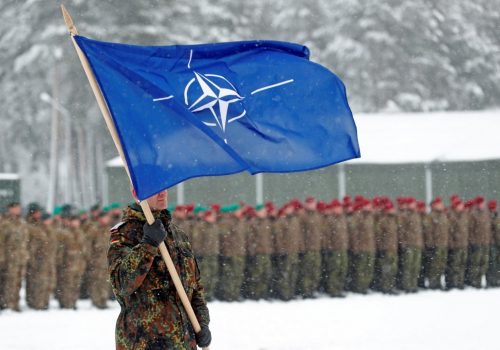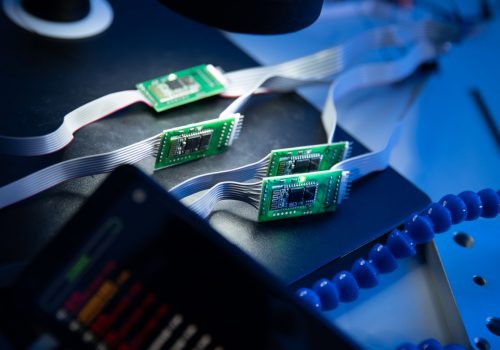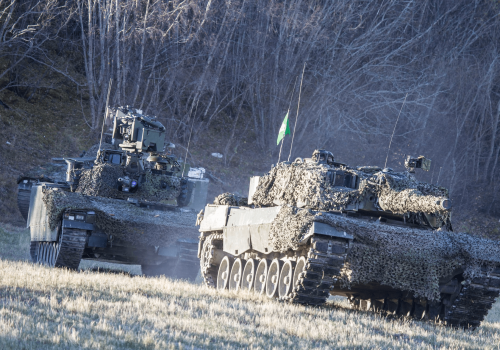‘Game out’ decision making
As the world reenters an era of great power competition, many of the geopolitical and ideological certainties that lend NATO its sense of purpose are dissolving. However, the Western democratic values on which the Alliance was founded, on which its success has been built, and from which it continues to derive its moral authority, endure. The principles of consensus and mutually assured security are as important as ever.
As challenges proliferate, one of the greatest threats to NATO could be a lack of confidence—not in the organization’s central purpose or relevance, but in its ability to succeed in an increasingly fluid, fast-moving, and ambiguous world.
We remain configured for joint operations in the era of industrial warfare and have not shifted at the pace needed to be an integrated force able to operate and fight in the Information Age.
NATO faces a diverse array of challenges ranging from conventional defense and security threats, to climate change, migration, political polarization, and a global pandemic. From an operational standpoint, the corresponding intricacies of subthreshold and hybrid warfare present NATO’s most urgent challenge. Actions and reactions are spilling over from the traditional domains of land, sea, and air into the realms of space, cyber, and information, and vice versa. The lines between competition and conflict, between adversaries and enemies, are blurring—and so are ethical and legal boundaries.
The need for swift, well-informed consensus building and fast, effective decision making
Potential adversaries such as Russia, China, and Iran have a crucial advantage. They are unencumbered by the need for consensus. Their decision making is centralized and they are, as a result, quicker and more agile. They can thus act with greater confidence, however ill-placed that confidence may be. NATO, by comparison, is institutionally sclerotic. It’s slow to react and slow to act. The moral and legal authority conferred by operating through consensus has always been one of the organization’s greatest strengths, yet in a fast-moving world it has the potential to be a serious vulnerability.
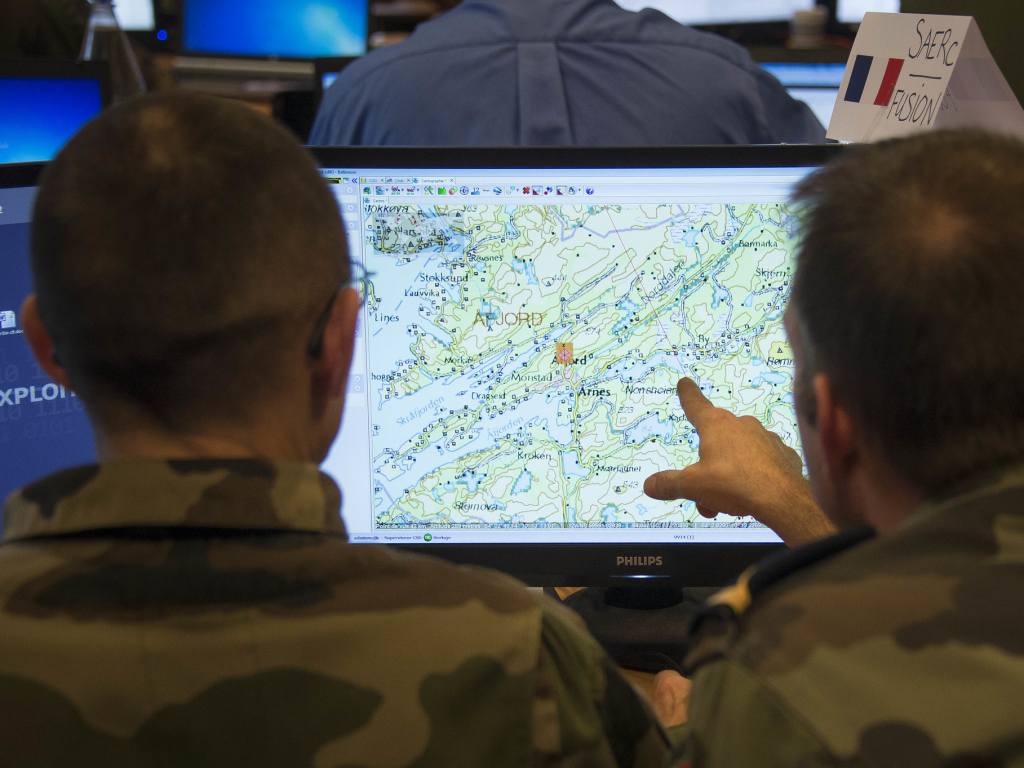
It doesn’t help to have a force which is ready to move within forty-eight hours if we need forty-eight days to take a decision to make it move.
As part of NATO’s Unified Vision 2014 trial, officers analyze data coming in from the field at the trial control room.
Source (NATO Flickr)
To account for this while maintaining a competitive edge, it is essential that NATO improve the speed, efficiency, and effectiveness of its strategic and operational decision making. The organization must be confident that it has an accurate, all-domain, and up-to-date understanding of its threats, that it has explored the full spectrum of operational options, and that it has analyzed the likely cross-domain consequences—intended and unintended—of each one.
In essence, NATO must move away from the slow, cumbersome production of static plans. Instead, at every level, from the North Atlantic Council and the Military Committee down to individual field units, it must embrace a culture of perpetual readiness and rehearsal.
Translating a technological lead into a strategic advantage
In this respect, NATO’s contemporary technological lead and industrial sophistication offer a potentially priceless advantage. The technology-driven upheaval that is transforming our industries, economies, and societies—the so-called Fourth Industrial Revolution—will transform defense and security equally profoundly. This revolution is characterized as much by the convergence of existing technologies as the creation of new ones. Innovations across and between the fields of robotics, bioscience, automation, data analytics, machine learning (ML), and cloud computing are opening extraordinary opportunities. Social media platforms, e-commerce, driverless cars, and the Internet of Things are all products of this revolution. It is not hard to see that, in the coming years, military power will increasingly be derived from computer software as much as military hardware or head count; it will rely as much on technologies that help integrate capabilities as on individual weapons platforms.
“For NATO, BDAA (Big Data and Advanced Analytics) will enable increased operational efficiency, reduced costs, improved logistics, real-time monitoring of assets and predictive assessments of campaign plans. At the same time, it will generate significantly greater situational awareness at strategic, operational, tactical, and enterprise levels. These applications will lead to a deeper and broader application of predictive analytics to support enhanced decision making at all levels. It has the potential to create a knowledge and decision advantage, which will be a significant strategic disruptor across NATO’s spectrum of capabilities.”
–NATO Science and Technology Organization, Science and Technology Trends 2020-2040: Exploring the S&T Edge
When it comes to improving the speed and accuracy of decision making, and building well-informed consensus among allies, one of the more promising technologies is the Single Synthetic Environment (SSE).
Watch the podcast
From models and simulations to the single synthetic environment
For decades, organizations of all kinds have been using models and simulations, fueled by ever-larger amounts of data and supported by ever-increasing computing power, to gain a better understanding of the world around them. From financial forecasts to digital wind tunnels and flight simulators, models and simulations provide insights into the challenges organizations face and how best to meet them.
Currently, however, these models and simulations are siloed. They are increasingly expensive to develop and procure. Most importantly, they are also failing to keep up with the burgeoning sophistication of the world they are designed to represent because they tend to serve narrow purposes.
An SSE, like the one under development now for the United Kingdom’s Ministry of Defence, is designed to address these shortcomings. It is a virtual world where models, data, and artificial intelligence (AI)/ML technologies from a range of sources and suppliers can converge to represent any real-world operating environment in enormous detail.
This environment can represent every military domain and an operating environment of any size, from a street or city block to a country or entire region. It can bring physical elements like terrain and weather together with abstract social, demographic, political, and economic systems and help users understand cross-domain effects.
Unlike “digital twins” (digital representations of physical systems), an SSE can be used to run sophisticated simulations that are probabilistically predictive in nature as well as descriptive. Not only can it help users visualize and interpret scenarios as they are, it can also provide insights into how those scenarios could unfold. By playing out multiple options simultaneously, planners, policy makers, and leaders can explore probable cross-domain consequences (intended and unintended) in a virtual world before taking action in the real one.
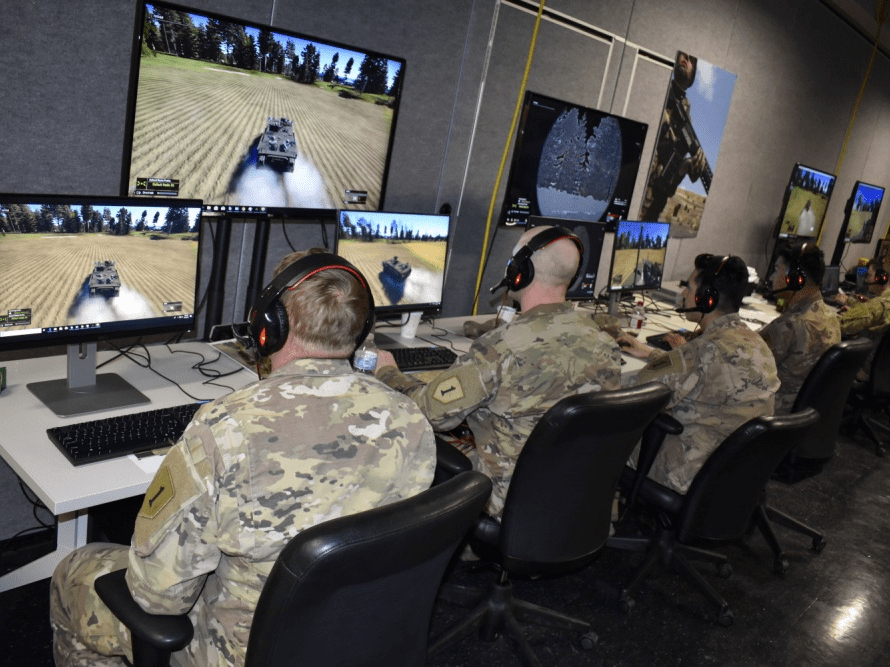
Unlike “digital twins” (digital representations of physical systems), an SSE can be used to run sophisticated simulations that are probabilistically predictive in nature as well as descriptive.
A team tests out a prototype for the Reconfigurable Virtual Collective Trainer – Ground during the Synthetic Training Environment Cross Functional Team’s User Assessment at Fort Riley’s Mission Training Complex.
Integrated planning, training, mission rehearsal, and decision support
One of the more powerful features of an SSE is its ability to accommodate hundreds or even thousands of users simultaneously, whether that’s in a collective training exercise or each fulfilling a different function in the analyzing, planning, and response process. What is more, an SSE allows different users to interact with this virtual world in different ways, each according to their function or mission.
Some personnel may need to see their environment in terms of graphs and data via a live, geospatial dashboard. Others may wish to see two-dimensional, tabletop maps via a course-of-action editor that enables collaborative planning. Some still may elect to experience their area of operations from a three-dimensional aerial standpoint or via a wargaming platform that combines the simulated environment with user-controlled adversarial interactions. Those on the ground can view the SSE from a first-person perspective in order to train and rehearse.
All this means there is a coherent, tightly integrated decision workflow from the first indication of a crisis through strategic assessment, response option evaluation, planning, rehearsal, and to final execution.
In this way, an SSE can help organizations integrate vertically and horizontally, and so deliver major improvements in preparedness across an entire enterprise, whether that’s a military unit, a joint headquarters, or even an integrated, multinational alliance.
Shared costs, shared benefits, and shared opportunities
If adopted by NATO, an SSE would act as a digital backbone along which a whole new generation of capabilities could be assembled and integrated. Thanks to open development standards, it could accommodate a wide variety of the most relevant, up-to-date content from suppliers across different governments, academic institutions, and industries. The SSE would be deployed within an approved NATO hosting environment—on secure cloud or on-premises servers, for example—to ensure the highest security and control measures. It would be updated continuously, quickly, and economically, and thereby overcome the limitations of many current siloed, single-supplier solutions. It is an exciting opportunity for the Alliance to reduce costs whilst also improving the speed and quality of decision making.
As allies’ economies come under pressure from competition and the fallout from the COVID-19 pandemic, the importance of cost-efficiency is difficult to overstate. It is imperative, therefore, that NATO share the financial burden between the allies just as they share its benefits. There is no escaping the fact, however, that the transformation that is so essential to retaining its competitive advantage will require an increased appetite for the relatively modest financial risks associated with technological progress. Experimentation is, after all, essential to genuine innovation.
This transformation will also require a less bureaucratic and more agile approach to development. The pathway to a fully functional SSE would be first to develop a proof of concept through experimentation and joint development. This would then be stress tested through demanding, high-level exercises. If successful, this proof of concept would be built out into a fieldable capability, which would, in turn, be rapidly deployed throughout NATO’s Command Structure.
Leveraging technology to promote human imagination, experience, and intuition
As NATO looks ahead, innovations like the SSE promise something far more profound than mere digital augmentation. They offer a means of organizational transformation. NATO’s technological lead, like the peace that it is dedicated to preserving, is not assured; it is, for the moment, a fortunate state of affairs. As competitors redouble their efforts to dominate the realms of information and cyber warfare through innovation in emerging technologies like AI and ML, staying ahead will demand imagination, radical innovation, and significant ongoing investment.
As with any technology, the value of a system like an SSE lies not in its power or sophistication but in how wisely NATO uses it. It is not a “magic box.” It will neither take humans out of the loop nor make decisions on their behalf. What synthetic environments can do, however, is give us intuition for ambiguous environments and help us quickly achieve well-informed consensus. They can help senior leaders apply their intuition and experience and give them confidence in their ability to act fast and effectively—whatever the threat.
Using such technology to improve the speed, efficiency, and effectiveness of decision making will be crucial to retaining and boosting confidence throughout NATO. Our all-important Alliance should act now to adopt and integrate all the advantages that an SSE would confer.
* * *
Air Marshal Sir Christopher Harper is a former UK military representative to NATO; he was director general of the NATO International Military Staff from 2013 to 2016. He is a non-resident senior fellow at the Atlantic Council and an adviser to the UK technology company, Improbable.
Explore the podcast series
Related NATO 20/2020 essays
Related program

The Transatlantic Security Initiative, in the Scowcroft Center for Strategy and Security, shapes and influences the debate on the greatest security challenges facing the North Atlantic Alliance and its key partners.
Subscribe for events and publications on transatlantic security
Sign up for updates from the Atlantic Council’s Transatlantic Security Initiative, covering the debate on the greatest security challenges facing the North Atlantic Alliance and its key partners.
Image: Student pilots train on a virtual reality flight simulator as part of the Pilot Training Next program
(Source: Defense Visual Information Database System)
